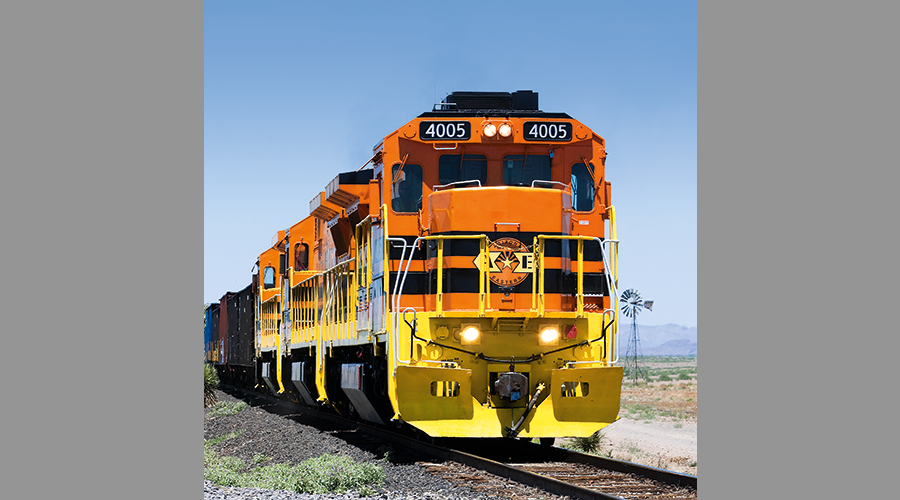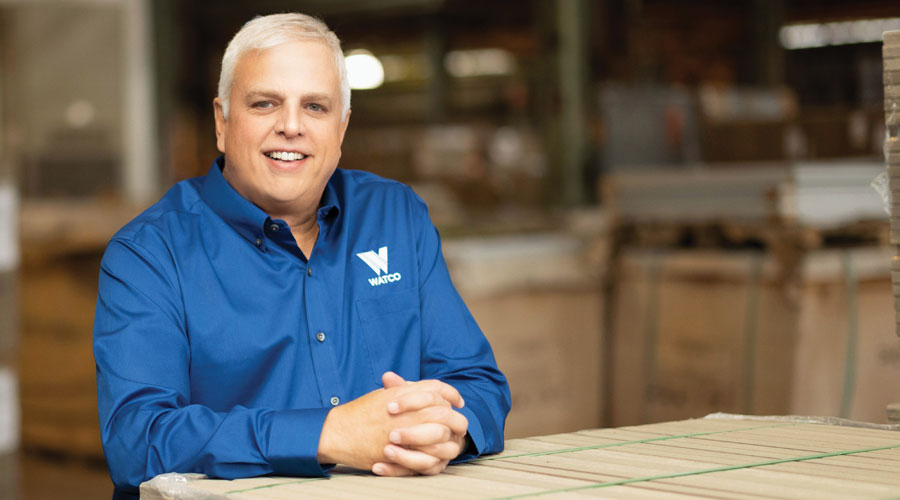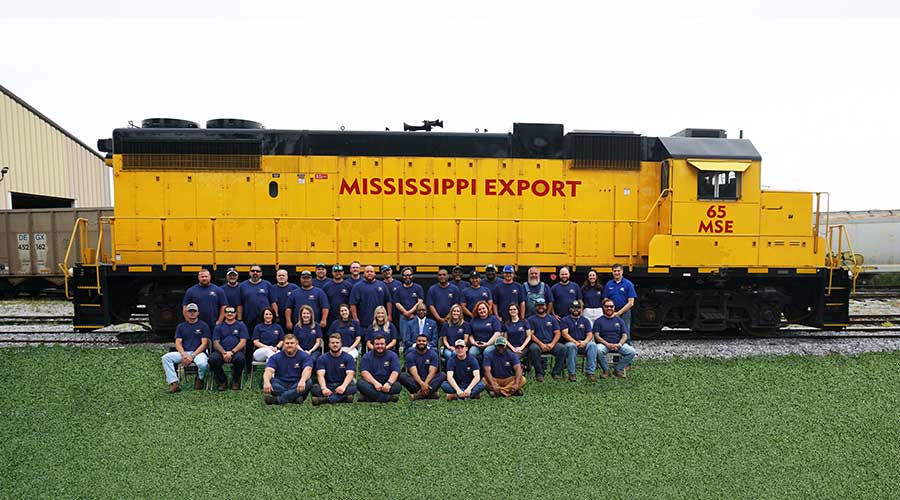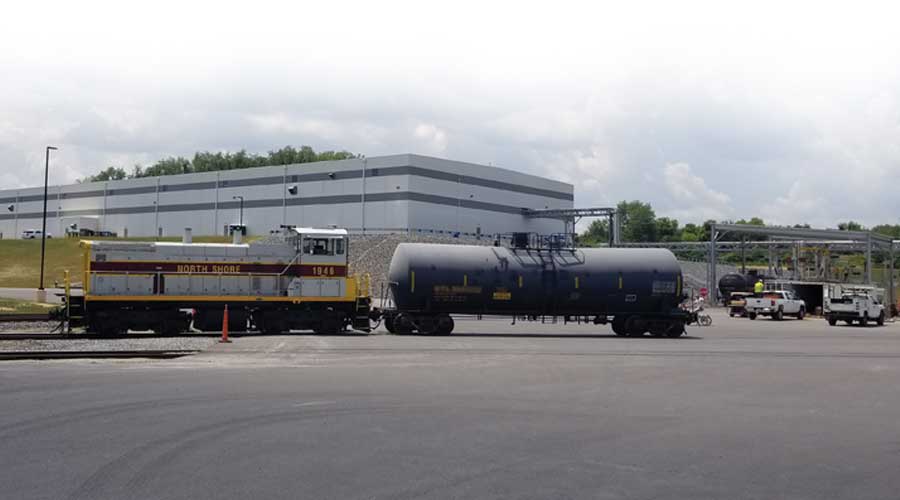Stay updated on news, articles and information for the rail industry
August 2007
Rail News: Short Lines & Regionals
Of global trade and garbage
After a nearly two-decade hiatus, the Staten Island Railroad is back in business.
On June 28, CSX Transportation hauled its first load of goods — containers of Asian imports — from the New York Container Terminal on Staten Island to the Chemical Coastline Connector hub in Elizabeth, N.J. The journey was just eight short miles on the revived Staten Island Railroad, but long in the making. And sometime this summer, Norfolk Southern Railway could begin to service the port. The aim: transport 8 percent to 10 percent of all containers arriving at or departing from the port via rail.
Since 1991, when the Port Authority of New York and New Jersey (PANYNJ) and New York City Economic Development Corp. (NYCEDC) shut down the Staten Island Railroad — not to be confused with the Metropolitan Transportation Authority’s Staten Island Railway passenger line — trucks had been the island’s only connection to the rest of the United States. But evolving global trade patterns and trash — courtesy of a $40 million truck-to-rail solid waste transfer facility the City of New York opened this spring — has pumped new life into the line.
“Whether it’s wine coming out of Europe or footwear out of Asia, it will move by rail,” says New York Container Terminal President Jim Devine, adding that direct-rail operations are moving about 650 containers per week; the railroad hopes to transport 1,000 a week by year’s end.
Rail accessibility’s the goal
The revived Staten Island Railroad is part of PANYNJ’s ambitious ExpressRail system. To stay competitive with other North American ports, the bi-state agency invested an estimated $530 million to build intermodal on- or near-dock rail facilities at its three main container terminals.
The goal’s a lofty one: make the seaports the most rail-accessible in the nation.
In March, NYCEDC and PANYNJ entered into an agreement with CSXT, NS and Conrail to provide rail service to the island.
The agencies jointly spent $75 million to provide direct rail access to the New York Container Terminal, which opened in 1996, at Howland Hook and other Staten Island businesses.
Built on a 39-acre parcel that was once a Procter & Gamble facility, ExpressRail Staten Island can handle 100,000 containers annually and features 6,000 feet of track and a rail-switching and train storage facility. From the facility, trains travel along the Staten Island Railroad several miles east to Arlington Yards, where loads are transferred to Conrail, NS or CSXT.
But to get containers from the port to ExpressRail and then the Staten Island Railroad, Devine had to get into the train business. Freight carriers were reluctant to travel into Staten Island because they already had direct rail operations at the two New Jersey ports.
Being able to load and inspect a string of double-stacked cars was crucial to convincing CSXT, NS and Conrail to come into Staten Island, Devine says.
“We’re disadvantaged being on the wrong side of the bridge and thought it was important to have the flexibility of having our own engine,” he says, adding that New York Container Terminal purchased a refurbished GP38-2 locomotive to shuttle the containers about 3,200 feet to the new intermodal yard.
In addition, the New York Container Terminal regularly serves a number of shipping lines, including The Grand Alliance (Hapag-Lloyd Container Line, Nippon Yusen Kaisha, Orient Overseas Container Line and Malaysia International Shipping) and the New World Alliance (APL Ltd., Mitsui OSK Lines, Hyundai Merchant Marine and Evergreen Marine). And when the dredging of the Kill Van Kull, the waterway that separates New Jersey from Staten Island, is complete, the terminal will be able to accommodate larger ships, and shipping giant Hamburg Sud will switch its operations to the Staten Island facility.
A waste-full opportunity
But the Staten Island Railroad isn’t just in operation to serve the container terminal. Two businesses along the Travis Branch Line on the island’s western shore — recycler VISY Paper and cement manufacturer Vanbro Corp. — also are likely to use the Staten Island Railroad. Historically, both shippers have moved goods only via truck.
Nonetheless, the revival of the railroad never would’ve received the kind of government support it did without the waste-hauling component. The NYCEDC/PANYNJ investment included the modernization of the rusting, 560-foot-long Arthur Kill Vertical Lift Bridge, which connects Staten Island to New Jersey.
Built by the Baltimore and Ohio Railroad in 1959, the bridge features two 215-foot towers with a truss span of 135 feet. The bridge subsequently received a state-of-the-art electric system to operate the lift. The renovation hit a public snag when part of the lift bridge went out of whack by as much as 11 inches as it moved up and down, but the problem was solved by April.
Now, the new $40 million Staten Island Transfer Station will use the bridge to transport solid waste via rail. A truck-to-rail solid waste transfer facility located on the site of the former Fresh Kills landfill, the transfer station will compact waste into sealed 20-foot containers, which will be loaded onto flat cars and hauled via rail to a South Carolina landfill.
Allied Waste obtained a $25.5 million annual contract to haul the waste from the transfer station and deliver it to one of the company’s own landfills in South Carolina. Allied Waste awarded CSXT an $8.8 million yearly contract to provide rail service. The contract, which went into effect in April, calls for CSXT to move 44 sealed containers of trash on 11 rail cars every day.
Between the container port and waste transfer station rail operations, 100,000 truck trips a year will be eliminated on Staten Island — especially truck moves over the already overburdened Goethals Bridge, New York City officials believe.
“There will be more room on the expressway, and tons less pollution,” says Staten Island Borough President James Molinaro. “This is a win-win for everybody.” 
Chuck Bennett is a metro reporter for The New York Post.
New short line on tap for Michigan
Watco, NS partner to launch Michigan Central Railway in ’08
Norfolk Southern Corp. and the Watco Cos. Inc. are teaming up to launch a short line in Michigan. In first-quarter 2008, the Kalamazoo-headquartered Michigan Central Railway will begin operating 384 track miles in Michigan and Indiana.
In late July, the Class I and short-line holding company submitted a filing to the Surface Transportation Board to change ownership of several lines from NS to Watco and gain approval to form the railroad under a joint venture.
Watco’s soon-to-be 17th short line will operate lines between Jackson and Lansing, Mich.; Ypsilanti and Kalamazoo, Mich.; and Grand Rapids, Mich., and Elkhart, Ind.
The railroad also will acquire NS’ trackage rights for an Amtrak-owned line between Kalamazoo and the Michigan/Indiana state line over which Amtrak operates eight trains daily.
Two years in the making ...
Watco will be the short line’s parent company and majority owner; NS will be a minority investor.
“NS is contributing the lines and trackage rights, and we will handle the daily operations,” says Watco Executive Vice President and Chief Commercial Officer Ed McKechnie.
The Class I and Watco, which owns 16 short lines operating in 14 states, formed the joint venture to rebuild the line’s traffic. During the past several years, traffic has dropped 15 percent — annual carloads dropped from 51,000 to 48,000 alone in the two years NS and Watco worked on arranging a deal, says McKechnie.
“It’s the Class I model vs. a short-line model,” he says. “We’ll have two people working full-time on the property to make it work.”
Two better than one
Instead of appointing a general manager to oversee the Michigan Central, Watco named David Eyermann interim president of the short line. Currently senior VP and assistant chief operating officer, he will serve in both roles for the company. Watco also will appoint a VP of transportation for Michigan Central.
“The president will work to grow the business and interface with Amtrak, customers and communities, and the vice president will handle day-to-day operations,” says McKechnie.
Watco plans to spend more than $6 million during the Michigan Central’s first year of operation — and more than $20 million within three years — to improve infrastructure and equipment.
“We expect to start operations on March 1,” says McKechnie. “The lines have been big on steel and ag products, but we’ll target all kinds of traffic.”

— Jeff Stagl


 LRW Honors Amtrak’s Acheson As Railway Woman Of The Year
LRW Honors Amtrak’s Acheson As Railway Woman Of The Year
 From Editor-In-Chief Foran: Of Gender Equity And Inclusion
From Editor-In-Chief Foran: Of Gender Equity And Inclusion
 Spotlight On Some Of Today’s Rail Safety Products
Spotlight On Some Of Today’s Rail Safety Products
 Women of Influence in Rail eBook
Women of Influence in Rail eBook
 railPrime
railPrime








